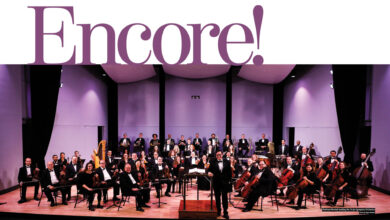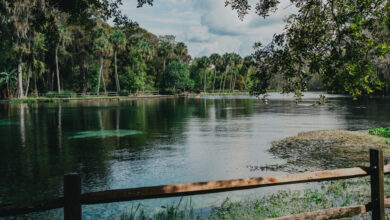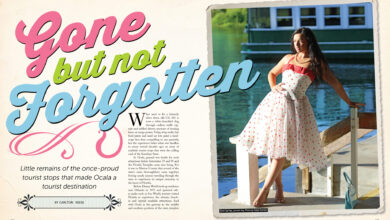Story: Jaye Baillie, APR, IOM
President & CEO of the Ocala/Marion County Chamber of Commerce
Closed to U.S. travel for 50 years, Cuba’s door has been reopened in order to bridge a gap between the two estranged nations. Through their partnership with Chamber Explorations, the Ocala/Marion County Chamber of Commerce was issued a special license by the Department of the Treasury, Office of Foreign Assets Control (OFAC), to authorize the registration of 18 guests for an exclusive insider’s look at Cuba.
Forty-four minutes after wheels up at MIA International, eighteen Ocala residents were propelled fifty years back in time. The time machine, a charter jet operated by Sky King, flew an assortment of travelers across the Florida Straits landing at the Jose Marti Airport in Cuba’s capital city, Havana. Within moments after exiting passport control and customs, we saw a land frozen in time. Vintage cars, horse drawn wagons, billboards sporting quotes from revolutionary hero Che Guevara, colonial style buildings in a sad state with their missing doors, windows and sagging facades.
Yet there we were – in this land where all of us had reasons to romanticize about travel to Cuba. My parents, as well as my husband’s, honeymooned in Havana prior to 1955. Several members of our group were longtime admirers of Hemingway and were interested in the pilgrimage to his home, Finca Vieja and seeing his infamous fishing boat, The Pilar. Others, students of history, were fascinated by the Revolution-the memories still vivid-the leaders they still revere. Still others just loved the fact, that Cuba had been forbidden fruit for Americans and this small crack in the door was enticing enough to book the trip.
Our group was a part of a recently established “People to People” program. Sanctioned and regulated by the United States Office of Foreign Assets (OFAC), American citizens were now authorized to apply for travel visas to Cuba through any of the scores of approved agencies. We travelled with chamber member, Chamber Explorations one of many agencies licensed by OFAC as a Travel Service Provider that allowed them to “arrange travel to, from or within Cuba, sell tickets for flights to Cuba and reserve and sale accommodations for authorized travelers within Cuba.”
Our travel instructions contained a series of restrictions, regulations and admonishment reminding us that this trip was more an adult ‘fieldtrip’ rather than a much needed Caribbean vacation. Travelers were instructed to show up on the bus each day and to complete a log of daily activities. In the event of inspection by the OFAC, each traveler was told to maintain the travel log for at least five years.
According to the Treasury Department, the tour’s itinerary must “have a full-time schedule of educational exchange activities that will result in meaningful interaction between the travelers and individuals in Cuba.”
And meaningful it was. We experienced close encounters with artists, musicians, farmers and chefs under the close guidance of our beloved tour guide Erik. At each stop, Erik served to interpret what we were experiencing. At a youth strings concert in Cienfuegos, Cuba’s only city colonized by the French in 1819, he served as the bridge between an enthusiastic conductor from Russia, the students and our English speaking group. However, between the music, the talent of the youngsters and the passionate maestro, interpretation was barely necessary. The music transcended the language barrier, especially as they played “Shenandoah.” We each left with a CD of their music and felt confident that we were within OFAC’s regulations of what we could bring back as it was, we considered, informational materials exempt from the restrictions.
Follow the rest of this Cuban adventure in this month’s Sept.2012 issue.






